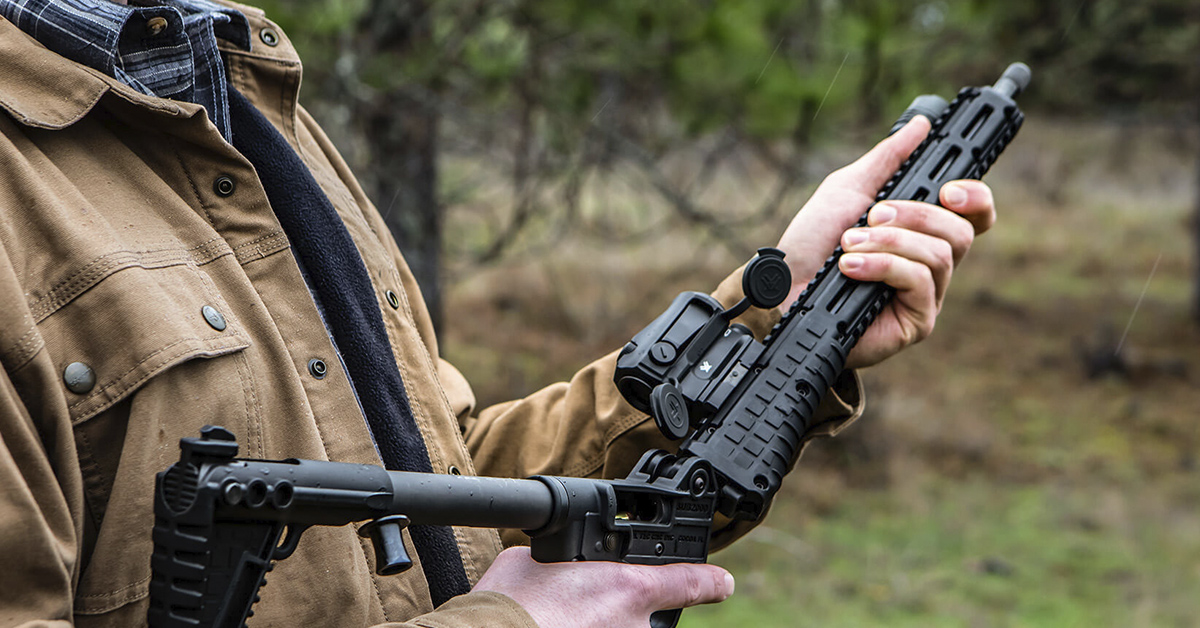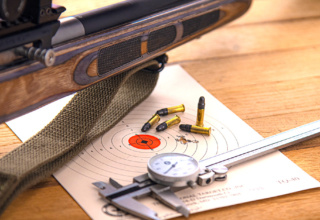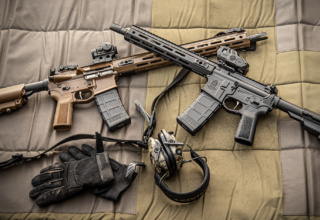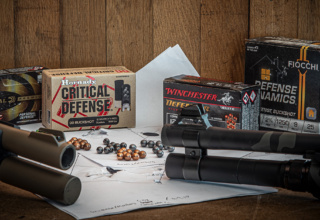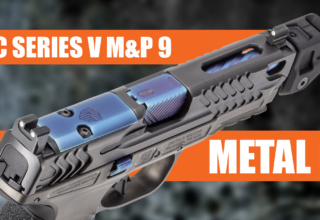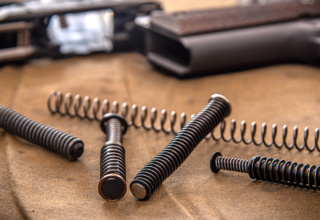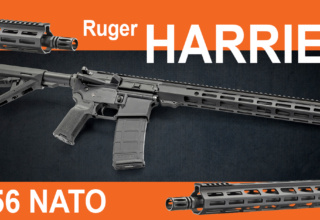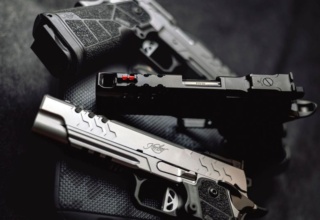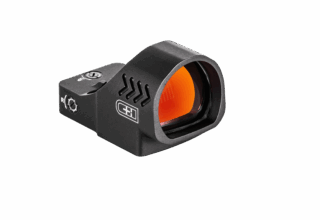The KelTec SUB2000 Gen 3 folding 9mm carbine is one interesting crossover you need to check out for home defense
by Bob Campbell
Regarding handguns and carbines in the same caliber, I have often thought a pistol-caliber carbine is way cool and makes a fine recreational set-up, not to mention a 3-gun contender. The pairing of a revolver and a carbine in the same caliber — .32-20, .38-40 or .44-40 — was well-suited to prevailing conditions in the Old West. Just the same, when Winchester introduced the .30-30 WCF, lawmen and hunters alike adopted the hard-hitting, long-range rifle. The modern .357 Magnum and .44 Magnum rifle and revolver enjoy some popularity.
We must consider the firearm within its limitations.
For short-range hunting, Magnum lever-actions are fine. Personal defense is a serious business, and I prefer to be all I can be in both training and gear. The handgun is the weapon of opportunity carried at all times to provide lifesaving utility and to take back control of a situation. A skilled shooter may defend his home with a handgun. The shotgun, to my way of thinking, molded by much life experience, is the first-class home defender. If I want a rifle, I want a real rifle, and that will mean a .223 rifle for defense use or a .308 for hunting.
It is only recently I have warmed up to the 9mm carbine.
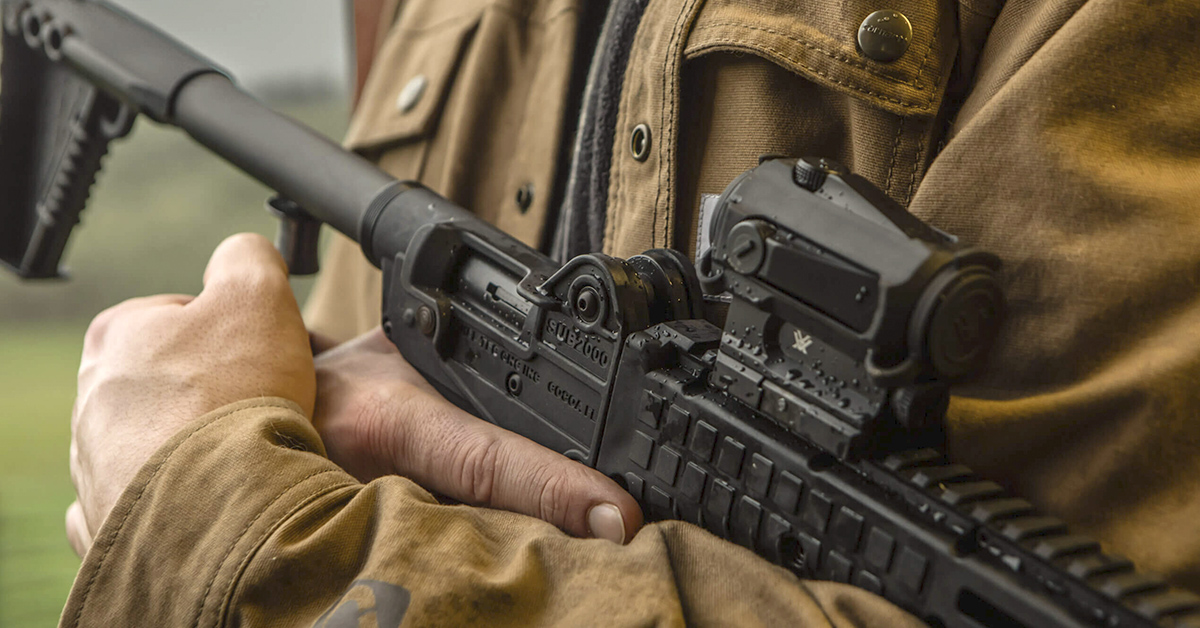
I have owned quite a few. Most were unsatisfactory. Mashups of SMG designs are almost always bulky, heavy, and possess triggers it would take a tranquilized Gorilla to handle. The Marlin Camp Carbine deserved better than it got in sales and was a carbine ahead of its time. There are AR types in 9mm, in which I don’t see the point. I suppose I am opinionated, but my opinions are conclusions based on hard facts.
The 9mm Luger is our most popular handgun caliber. The popularity of the 9mm pistol has folks looking hard for a solid 9mm carbine. This is a good idea — a great idea for many reasons, and not without precedent. As an example, during World War II, the Allies were impressed with the efficiency of the Sten 9mm SMG and later the Sterling, as well as Germany’s Erma/Schmeisser. Before the war, the Allies each had their own pistol caliber. After the war, everyone wanted 9mm handguns because they had 9mm SMGs. While a simplistic explanation, NATO adopted the 9mm at a time when 9mm SMGs were popular. America used but few SMG’s after adopting the excellent and fully automatic M2 .30 carbine — a story for another time. A number of modern SMGs were developed by HK, Beretta, and Walther. Most of these featured a selector switch. Tactical doctrine called for semi-automatic fire in most situations. These quality SMGs were the first popular pistol caliber carbines in 9mm. While there were also .40, 10mm, and .45 ACP versions, the 9mm was by far the more popular.
Most PCC types feature a blowback operation. Straight blowback and pressure are controlled by a relatively heavy bolt and recoil spring. This simple, straightforward action is quite reliable.

I would rate the KelTec SUB2000 Gen 3 high on the reliability scale and, just as importantly, it is low on maintenance demands. The SUB2000 is a neat and handy carbine.
If we have a reliable 9mm handgun, why would we wish to deploy a 9mm carbine for home defense? Or choose the 9mm over a .223?
You don’t have to have a 9mm handgun to deploy a 9mm carbine. The carbine, using GLOCK magazines, is nice to have but it should stand on its own. There are good pistol shots and there are not good pistol shots. For someone wishing to be well armed without dealing with the heavy recoil of a shotgun or the training required to master a handgun, the 9mm carbine makes sense. The 9mm doesn’t kick much in a service-size handgun and becomes downright docile in a carbine. Recoil is mitigated to a comfortable level. It is easy to get good hits because we have a three-point attachment, cheek weld, both hands on the carbine, and, with a red dot sight, both eyes open.
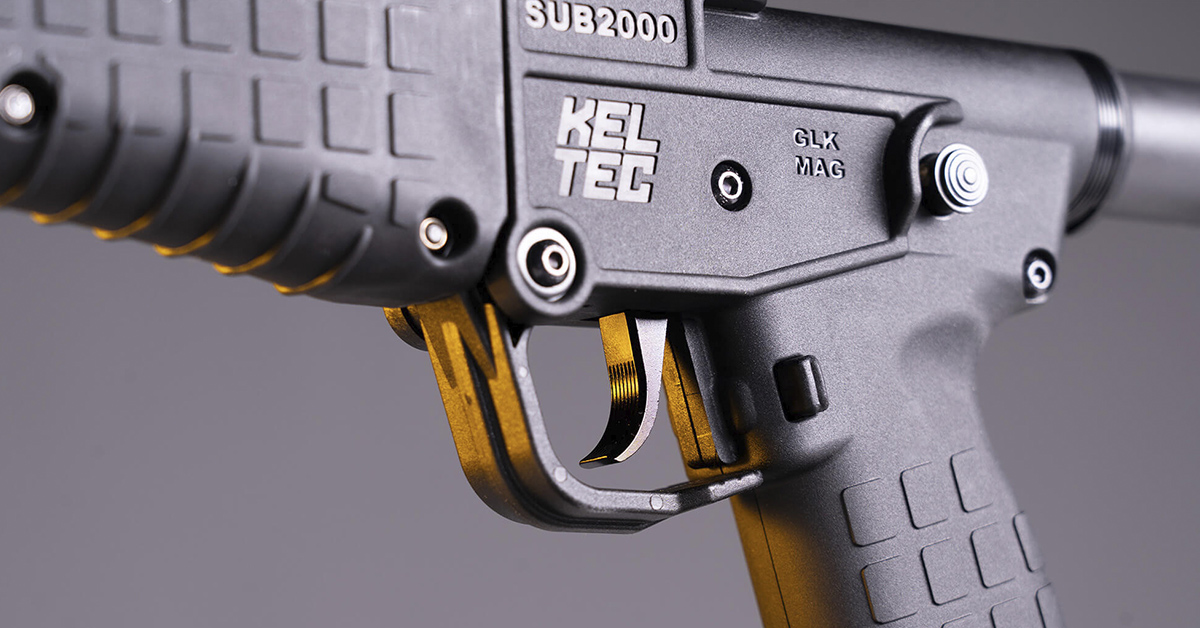
It doesn’t matter as much at short range, but at 25 to 50 yards, most bullet weights fire to the same point of aim — much closer than a pistol — because recoil simply isn’t a factor. There is less concern that barrel dwell time will affect the point of impact. A 124- or 147-grain bullet each offers good accuracy.
A quality 9mm carbine is also typically shorter and lighter than an AR-15 rifle and is more easily handled and more maneuverable in close quarters. I find the flash and blast of a .223 pistol rough to deal with in an indoor range with good hearing protection. Imagine firing it in your home! Besides, a 9mm carbine has it all over any pistol in handling and accuracy potential. You will fire more accurately with equal or less training than a handgun. And if you do own a 9mm handgun, you will need to stockpile only one caliber for home defense.
Getting more specific regarding 9mm carbines, my favorite is the KelTec SUB2000. Currently in its third generation, the SUB2000 has proven to be a reliable and useful firearm. It is even budget friendly. I am not the cheapest person, but a budget is a budget, and some are larger than others.
The Gen 3 answers questions that were not in vogue when the SUB2000 was introduced. Mounting a red dot required obtaining a special mount, as the folding mechanism would fold directly over where you would mount a red dot sight.
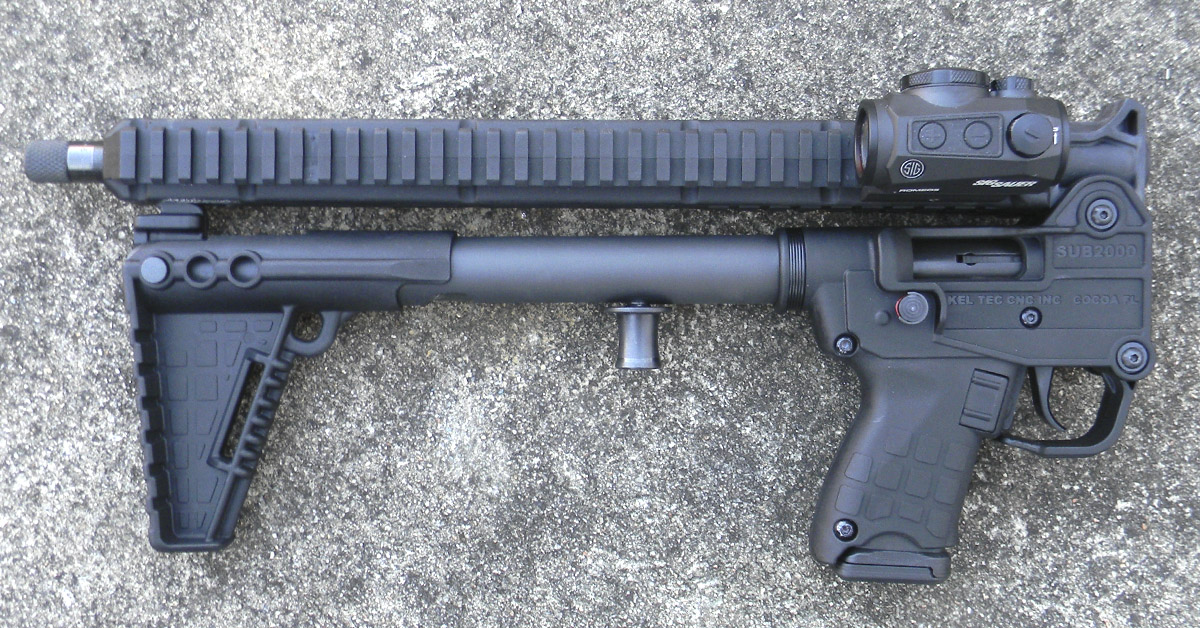
You don’t have to fold the gun up in storage but if you backpack or use the piece as a truck gun, the folding option is good to have. The new version folds in a different but similar manner. The trigger guard is hinged. Press forward and unhinge the trigger guard. The barrel and forend still fold up and over the receiver. (A safety block prevents firing with the carbine folded.) The Gen 3 differs in that the forend moves to one side by simply twisting it as you fold the carbine. A latch closes when the muzzle end of the barrel meets the stock.
It is simple to mount a red dot on the Gen 3, and you have plenty of space for mounting lasers or combat lights. The grip texture on the compact size grip is excellent and the grip accepts GLOCK 19 and all larger 9mm GLOCK magazines. While the 33-round magazine is an obvious force multiplier, all magazines provide a good reserve of ammunition.
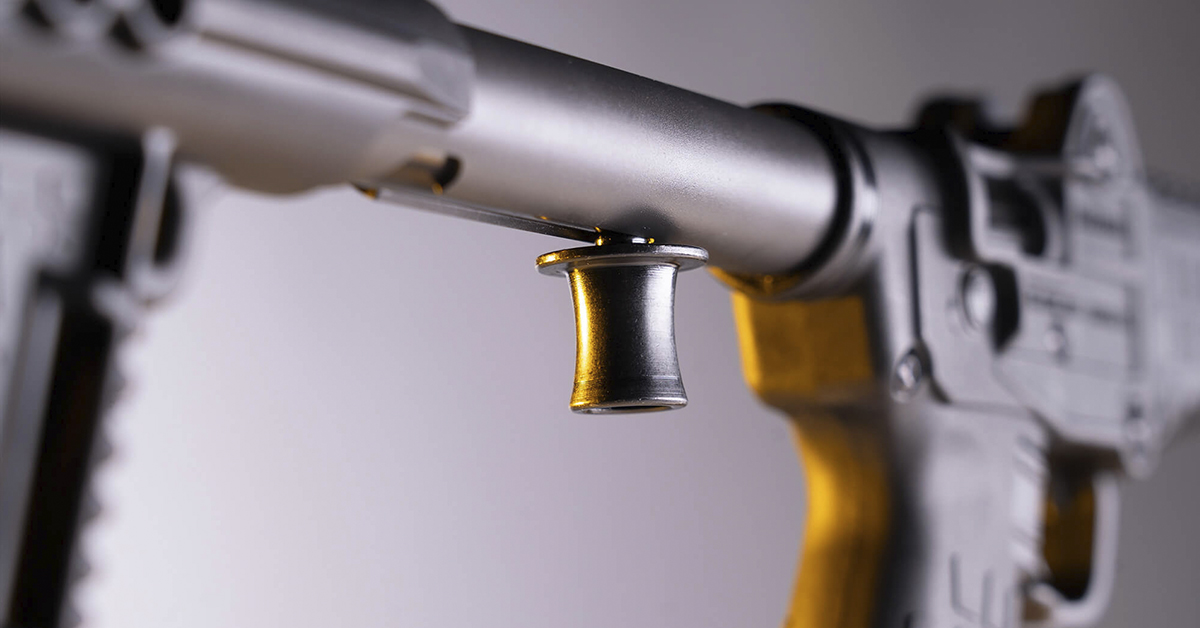
KelTec tells us they have managed to provide an easier-to-manipulate bolt, but it is still quite stiff.
I mounted a red dot and conducted a firing test that eventually resulted in over 600 spent cases over the course of two weeks. When that sight gave up the ghost, I installed a SIG Romeo 5 RDS. The Romeo 5 was sighted in and the test continued. I explored both relative and absolute accuracy. The carbine never failed to feed, chamber, fire, or eject as I burned up a mix of inexpensive training loads.
I fired at defense-oriented targets beginning at 7 yards, firing quickly with both eyes open. Recoil isn’t a factor. Firing and waiting to recover the sights in recoil isn’t a concern — just keep the dot on the target. Moving to 10-, 15-, and 25-yard groups proved much the same. The KelTec SUB2000 is a great shooter and it always has been. The new Gen 3 is simply a more refined piece. It seemed more accurate than previous versions but then it is a new gun and I used good optics and ammunition.
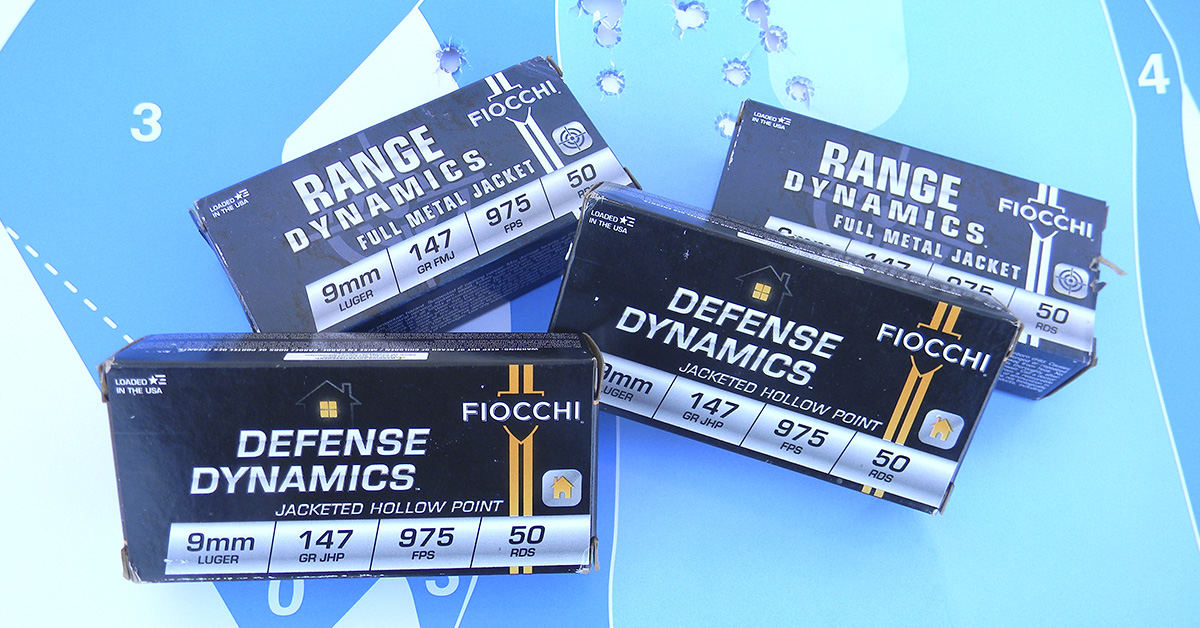
I fired a good mix of Fiocchi Range Dynamics loads, including both 115- and 147-grain FMJ. The heavier weight was especially easy to handle and noticeably more accurate. By the end of the test, the reliability and practical accuracy of the KelTec SUB2000 Gen 3 was well established. This is a light, handy 4-lb. carbine that will serve well in personal defense. I don’t say that lightly. While all criminals are not psychotic, the ones that invade your home cannot be said to be rational. A few actually are psychotic or a prisoner of terrible impulses. They enjoy what they do. I will let someone else consider the how and why. You must be prepared for the worst. Against a take-over gang or home invasion, the KelTec 9mm carbine is a great defender.
Accuracy and Performance
The .357 Magnum carbine is famed for gaining a great deal of velocity in a carbine barrel. It should, as the Magnum uses a heavy charge of slow burning powder that burns completely in a long barrel. In the 16-inch barrel carbine, the 9mm Luger — already exhibiting a full powder burn in a 4-inch pistol — doesn’t gain much. (Note the difference in muzzle signature between 9mm and .357 Magnum handguns.) Most 9mm loads gain around 100 fps; some a little less as they are optimized for pistol barrel performance. But there are exceptions. The primary advantage of the carbine is in shot placement. More accurate shot placement is a way to improve performance and wound potential.
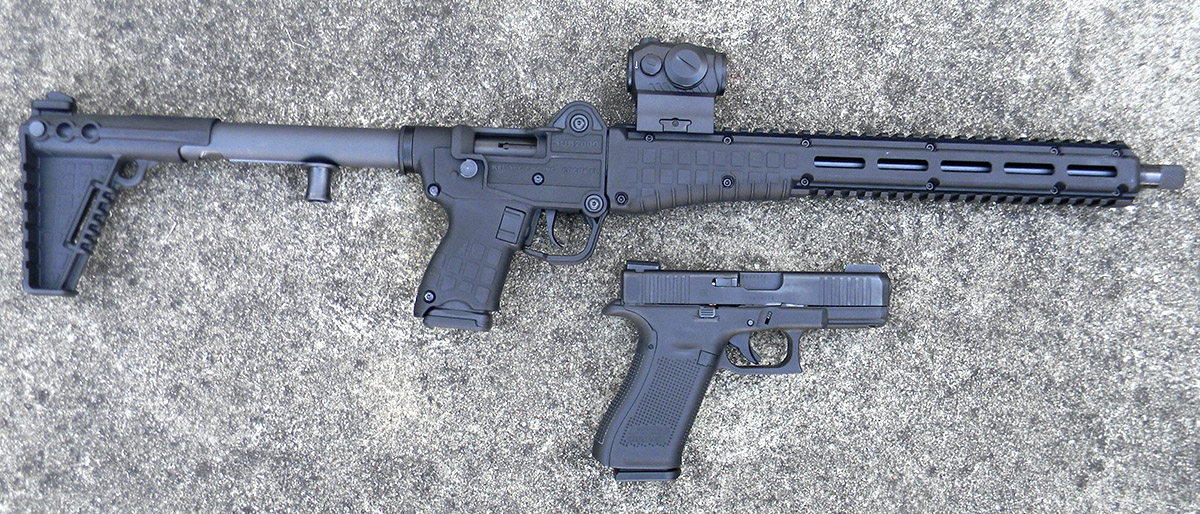
At one time there was a concern that a 9mm JHP that expands at pistol velocity might fly apart and underpenetrate at carbine velocity. In fact, these loads most often penetrate and expand slightly more. A modern bullet such as the proven Hornady XTP used in Fiocchi defense loads is improved but the improvement is not severe. The combination of accurate shot placement and improved performance is welcome.
Velocity and Performance Comparison
Fiocchi 115-gr. XTP load
- Glock 17 9mm: 1190 fps; .52-in. expansion; 16-in. penetration
- Kel Tec SUB2000 Gen 3: 1260 fps: .55-in expansion; 18-in. penetration
Fiocchi 124-gr. XTP load
- Glock 17 9mm: 1155 fps; .51-in. expansion; 18-in. penetration
- Kel Tec SUB2000 Gen 3: 1280 fps; .54-in. expansion: 20-in. penetration
I also fired a few other loads in sparing amount to check velocity.
- Buffalo Bore 147-gr. Outdoorsman: 1266 fps
- Buffalo Bore 115-gr. +P+: 1444 fps
Handload using Titegroup powder and 90-gr. Hornady XTP
- Springfield Echelon: 1390 fps
- KelTec SUB2000 Gen 3: 1523 fps
If you are a handloader, this carbine is fun. Just remember that a long gun cannot necessarily take a hotter load than a handgun!
50-Yard Testing
At fifty yards, I cranked the Romeo 5 down to its lowest setting and let the dot rest in the center of a black bullseye. I expected three-shot groups of 2.0 inches or so and that is what it registered with most loads. My 90-grain pest popper did not fare well with its four-inch group, and burner-grade FMJ will do about three inches. I fired three loads in the last session, and I believe I got a good handle on accuracy potential. A 50-yard gun? Sure, if you need to stretch the 9mm in area defense, it is a go.
3-Shot Group, 50 Yards
- Fiocchi 115-gr. FMJ: 2.6 in.
- Fiocchi 147-gr. FMJ: 1.8 in.
- Fiocchi 147-gr. JHP: 2.25 in.
What I Like
- The new folding mechanism is novel and solves a lot of problems. Low recoil, reliability, and good accuracy are easy to appreciate.
What I Don’t Like
- I cannot find anything to dislike except I would like to have back-up sights.
What I Would Change
- Again, back-up sights!
Compared To
- Only the Smith & Wesson FPC is as neat and nearly as light, while it costs more. It is a good gun, but the KelTec costs less.
KelTec SUB2000 Gen 3 Specifications
- Caliber: 9 mm
- Weight: 4.2 lbs.
- Magazine Capacity: GLOCK magazines; 10 to 33 rounds available
- Overall Length (Extended): 30.45 in.
- Overall Length (Collapsed): 29.25 in.
- Length (Folded): 16.15 in.
- Barrel Length: 16.15 in.
- Twist Rate: 1:10 in.
- Trigger Pull Weight: approximately 5 lbs.

